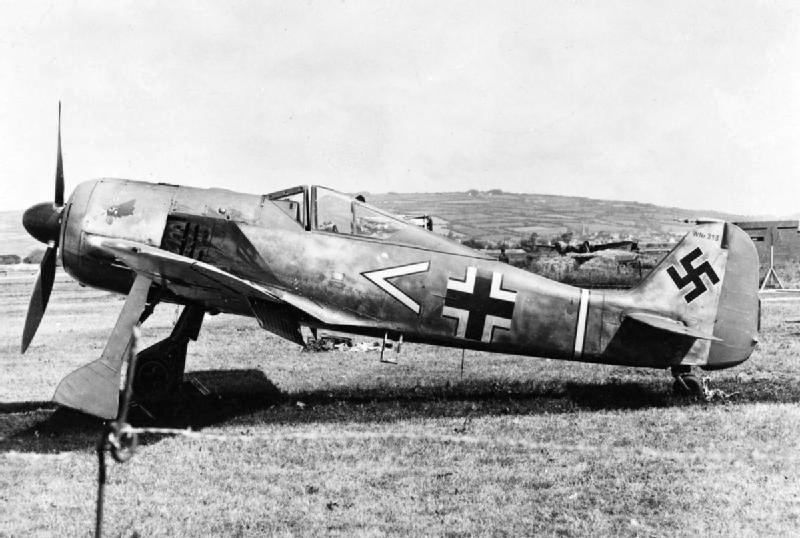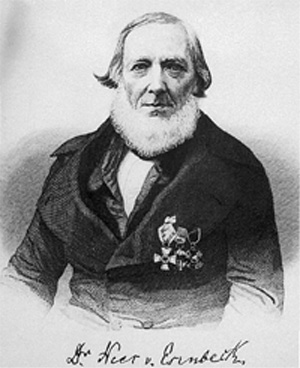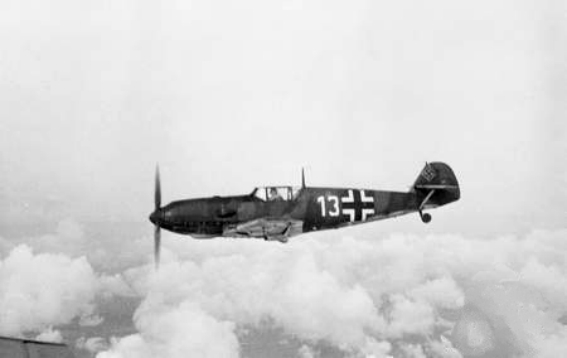|
Karl-Wilhelm Hofmann
Karl-Wilhelm Hofmann (24 March 1921 – 26 March 1945) was a German Luftwaffe military aviator and fighter ace during World War II who is credited with 44 aerial victories, which were achieved during 260 combat missions. All but one of his victories were claimed over the Western Front and in Defence of the Reich. Born in Reichelsheim, Hofmann grew up in the Weimar Republic and then in Nazi Germany. He joined the military service in the Luftwaffe and was trained as a fighter pilot. After his flight training, he was posted to ''Jagdgeschwader'' 26 "Schlageter" (JG 26—26th Fighter Wing) in June 1942. Flying with this wing, Hofmann claimed his first aerial victory on 11 October 1942 on the Western Front over a Royal Air Force fighter aircraft. In early 1943, elements of JG 26 were moved to the Eastern Front where Hofmann claimed one Soviet aircraft destroyed. His unit redeployed to the Western Front in June 1943. In February 1944, he was appointed squadron leader ... [...More Info...] [...Related Items...] OR: [Wikipedia] [Google] [Baidu] |
Reichelsheim (Odenwald)
Reichelsheim (Odenwald) is a municipality in the Odenwaldkreis (district) in Hesse, Germany. Geography Location Reichelsheim lies in the middle Odenwald at elevations between 200 and 538 m in the middle of the ''Geo-Naturpark Bergstraße-Odenwald''. Neighbouring communities Reichelsheim borders in the north on the communities of Fränkisch-Crumbach, Brensbach and Brombachtal, in the east on the town of Michelstadt and the community of Mossautal (all in the Odenwaldkreis), in the south on the community of Fürth and in the west on the town of Lindenfels (both in Bergstraße district). Constituent communities Reichelsheim’s '' Ortsteile'', besides the main one, also called Reichelsheim, are Beerfurth, Bockenrod, Eberbach, Erzbach, Frohnhofen, Gersprenz, Gumpen, Klein-Gumpen, Laudenau, Ober-Kainsbach, Ober-Ostern, Rohrbach and Unter-Ostern. History In 1303, Reichelsheim had its first documentary mention. Politics The municipal election held on 26 March 2006 yielde ... [...More Info...] [...Related Items...] OR: [Wikipedia] [Google] [Baidu] |
Jagdgeschwader 26
''Jagdgeschwader'' 26 (JG 26) ''Schlageter'' was a German fighter-wing of World War II. It was named after Albert Leo Schlageter, a World War I veteran, Freikorps member, and posthumous Nazi martyr, arrested and executed by the French for sabotage in 1923. The wing fought predominantly against the Western Allies. Formed in May 1939, JG 26 spent the Phoney War period guarding Germany's western borders following the German invasion of Poland and the outbreak of World War II. In May and June 1940 it served in the Battle of Belgium and Battle of France. From July 1940 it operated over England in the Battle of Britain under the command of Adolf Galland, future ''General der Jagdflieger''. JG 26 remained in France and Belgium fighting against the RAF Fighter Command Circus offensive in 1941 and 1942, with considerable tactical success. In 1943 it faced the USAAF Eighth Air Force, and along with the rest of the Luftwaffe fighter force, was worn down over Western Europe ... [...More Info...] [...Related Items...] OR: [Wikipedia] [Google] [Baidu] |
RAF Fighter Command
RAF Fighter Command was one of the commands of the Royal Air Force. It was formed in 1936 to allow more specialised control of fighter aircraft. It served throughout the Second World War. It earned near-immortal fame during the Battle of Britain in 1940, when the Few held off the Luftwaffe attack on Britain. The Command continued until 17 November 1943, when it was disbanded and the RAF fighter force was split into two categories; defence and attack. The defensive force became Air Defence of Great Britain (ADGB) and the offensive force became the RAF Second Tactical Air Force. Air Defence of Great Britain was renamed back to Fighter Command in October 1944 and continued to provide defensive patrols around Great Britain. It was disbanded for the second time in 1968, when it was subsumed into the new Strike Command. Origins On 20 May 1926, the forerunner of Fighter Command was established as a group within Inland Area. On 1 June 1926, Fighting Area was transferred to the Air D ... [...More Info...] [...Related Items...] OR: [Wikipedia] [Google] [Baidu] |
Arques, Pas-de-Calais
Arques () is a commune in the Pas-de-Calais department in northern France, bordering Saint-Omer. Geography Arques is situated in the middle of the Hauts-de-France region, 40 km from Calais and Dunkerque, and 45 km from Boulogne-sur-Mer. It lies on the border of the departments of Pas-de-Calais and Nord. The town is crossed by the Neufossé Canal, which connects the rivers Aa and Lys. The commune also includes several lakes—Beauséjour, Arc-en-ciel, Malhôve, Batavia—and part of the forest of Rihout-Clairmarais. History Arques is in the region of French Flanders. As this area has been under Belgian, English, French and Spanish rule, many of the names are French versions of names in other languages. In the wake of the Battle of the Golden Spurs a battle was fought here in April 1303 between French and Flemish. The Flemish were victorious in the Battle of Arques (1303). Arques is not to be confused with Arques-la-Bataille, where the Battle of Arques (158 ... [...More Info...] [...Related Items...] OR: [Wikipedia] [Google] [Baidu] |
Saint-Omer
Saint-Omer (; vls, Sint-Omaars) is a commune and sub-prefecture of the Pas-de-Calais department in France. It is west-northwest of Lille on the railway to Calais, and is located in the Artois province. The town is named after Saint Audomar, who brought Christianity to the area. The canalised section of the river Aa begins at Saint-Omer, reaching the North Sea at Gravelines in northern France. Below its walls, the Aa connects with the Neufossé Canal, which ends at the river Lys. History Saint-Omer first appeared in the writings during the 7th century under the name of Sithiu (Sithieu or Sitdiu), around the Saint-Bertin abbey founded on the initiative of Audomar, (Odemaars or Omer). Omer, bishop of Thérouanne, in the 7th century established the Abbey of Saint Bertin, from which that of Notre-Dame was an offshoot. Rivalry and dissension, which lasted till the French Revolution, soon sprang up between the two monasteries, becoming especially virulent when in 1559 St Omer ... [...More Info...] [...Related Items...] OR: [Wikipedia] [Google] [Baidu] |
Focke Wulf Fw 190
The Focke-Wulf Fw 190, nicknamed ''Würger'' ("Shrike") is a German single-seat, single-engine fighter aircraft designed by Kurt Tank at Focke-Wulf in the late 1930s and widely used during World War II. Along with its well-known counterpart, the Messerschmitt Bf 109, the Fw 190 became the backbone of the (Fighter Force) of the . The twin-row BMW 801 radial engine that powered most operational versions enabled the Fw 190 to lift larger loads than the Bf 109, allowing its use as a day fighter, fighter-bomber, ground-attack aircraft and to a lesser degree, night fighter. The Fw 190A started flying operationally over France in August 1941 and quickly proved superior in all but turn radius to the Supermarine Spitfire (early Merlin-powered variants)#Mk V (Mk V (Types 331, 349 and 352)), Spitfire Mk. V, the main front-line fighter of the Royal Air Force (RAF), particularly at low and medium altitudes. The 190 maintained superiority over Allies of World War II, Allied fighters until th ... [...More Info...] [...Related Items...] OR: [Wikipedia] [Google] [Baidu] |
Josef Haiböck
Josef Haiböck (28 February 1917 – 3 July 2002) was a general in the Austrian Air Force. During World War II, he served as a fighter pilot in the Luftwaffe of Nazi Germany and was a recipient of the Knight's Cross of the Iron Cross. Haiböck joined the Austrian Austrian Armed Forces (''Budensheer'') in 1956 and retired in 1977 as a ''Generalmajor''. During his career he was credited with 77 aerial victories in 604 missions. World War II World War II in Europe began on Friday 1 September 1939 when German forces invaded Poland. On 1 December 1939, ''Leutnant'' Haiböck joined ''Jagdgeschwader'' 26 "Schlageter" (JG 26—26th Fighter Wing), which had been named after Albert Leo Schlageter on 1 May 1939. There, he was assigned to 9. '' Staffel'' (9th squadron). At the time, the ''Geschwader'' was commanded by ''Oberst'' Eduard Ritter von Schleich, 9. ''Staffel'' by ''Oberleutnant'' Gerhard Schöpfel, and III. ''Gruppe'', to which the ''Staffel'' was subordinated, was led by '' ... [...More Info...] [...Related Items...] OR: [Wikipedia] [Google] [Baidu] |
Johannes Seifert
Johannes "Hannes" Seifert (6 October 1915 – 25 November 1943) was a German Luftwaffe military aviator and fighter ace during World War II. He is credited with 57 aerial victories achieved in 439 combat missions. This figure includes 11 aerial victories on the Eastern Front, and further 46 victories over the Western Allies, including three four-engined bombers. Born in Pinneberg, Seifert grew up in the Weimar Republic and Nazi Germany. He joined the military service in the Luftwaffe and was trained as a fighter pilot. Following flight training, he was posted to ''Jagdgeschwader'' 26 "Schlageter" (JG 26—26th Fighter Wing). Flying with this wing, Seifert claimed his first aerial victory on 10 May 1940 on the Western Front during the Battle of France fighter aircraft. He was made '' Staffelkapitän'' (squadron leader) of 3. '' Staffel'' (3rd squadron) of JG 26 in March 1940 and in July 1941, ''Gruppenkommandeur'' (group commander) of I. '' Gruppe'' of JG 26. Fol ... [...More Info...] [...Related Items...] OR: [Wikipedia] [Google] [Baidu] |
Hauptmann
is a German word usually translated as captain when it is used as an officer's rank in the German, Austrian, and Swiss armies. While in contemporary German means 'main', it also has and originally had the meaning of 'head', i.e. ' literally translates to 'head-man', which is also the etymological root of ''captain'' (from Latin , 'head'). It equates to the rank of captain in the British and US Armies, and is rated OF-2 in NATO. Currently there is no female form, like ''Hauptfrau'' within the military, the correct form of address is "''Frau Hauptmann''". More generally, a Hauptmann can be the head of any hierarchically structured group of people, often as a compound word. For example, a is the captain of a fire brigade, while refers to the leader of a gang of robbers. Official Austrian and German titles incorporating the word include , , , and . In Saxony during the Weimar Republic, the titles of , and were held by senior civil servants. (from Early Modern High German ... [...More Info...] [...Related Items...] OR: [Wikipedia] [Google] [Baidu] |
Ergänzungs-Jagdgruppe West
''Ergänzungs-Jagdgruppe West'' (EJGr West)For an explanation of the meaning of Luftwaffe unit designation see Luftwaffe Organization (Supplementary Fighter Group, West) was a fighter pilot training unit of the German Luftwaffe in World War II. It was formed on 6 February 1942 in Cazaux and renamed ''Jagdgruppe West'' (JGr West) on 30 November 1942. Commanding officers Gruppenkommandeure *Major Jürgen Roth, 6 February 1942 – 4 January 1943 *Major Georg Michalek The Knight's Cross of the Iron Cross (german: Ritterkreuz des Eisernen Kreuzes) and its variants were the highest awards in the military of Nazi Germany during World War II. The Knight's Cross of the Iron Cross was awarded for a wide range of rea ..., 5 January 1943 – 3 January 1944 *Hauptmann Herbert Wehnelt, 4 January 1944 – 4 November 1944 References ;Notes ;References Jagdgruppe West @ The Luftwaffe, 1933-45 {{DEFAULTSORT:Erganzungs-Jagdgruppe West Luftwaffe Wings Military units and formation ... [...More Info...] [...Related Items...] OR: [Wikipedia] [Google] [Baidu] |
People's State Of Hesse
The People's State of Hesse (german: Volksstaat Hessen) was one of the constituent states of Weimar Republic, Germany from 1918 to 1945, as the successor to the Grand Duchy of Hesse (german: Großherzogtum Hessen) after the defeat of the German Empire in World War I, on the territory of the current States of Germany, German states of Hesse and Rhineland-Pfalz. The State was established after Grand Duke Ernest Louis, Grand Duke of Hesse, Ernest Louis was deposed on 9 November 1918. The term "People's State" referred to the fact that the new state was a Republic (rather than implying that it was Socialist state, socialist) and was used in the same manner as the term Free_state_(polity)#Germany, Free State, which was employed by most of the other German States in this period. Like the Grand Duchy, the capital was Darmstadt and the state consisted of provinces Upper Hesse (german: Oberhessen, capital Gießen), Starkenburg (capital Darmstadt) and Rhenish Hesse (german: Rheinhessen, c ... [...More Info...] [...Related Items...] OR: [Wikipedia] [Google] [Baidu] |
Friendly Fire
In military terminology, friendly fire or fratricide is an attack by belligerent or neutral forces on friendly troops while attempting to attack enemy/hostile targets. Examples include misidentifying the target as hostile, cross-fire while engaging an enemy, long range ranging errors or inaccuracy. Accidental fire not intended to attack enemy/hostile targets, and deliberate firing on one's own troops for disciplinary reasons, is not called friendly fire,Regan, Geoffrey (2002) ''Backfire: a history of friendly fire from ancient warfare to the present day'', Robson Books and neither is unintentional harm to civilian or neutral targets, which is sometimes referred to as collateral damage. Training accidents and bloodless incidents also do not qualify as friendly fire in terms of casualty reporting. Use of the term "friendly" in a military context for allied personnel started during the First World War, often when shells fell short of the targeted enemy. The term ''friendly fire'' ... [...More Info...] [...Related Items...] OR: [Wikipedia] [Google] [Baidu] |





.jpg)


